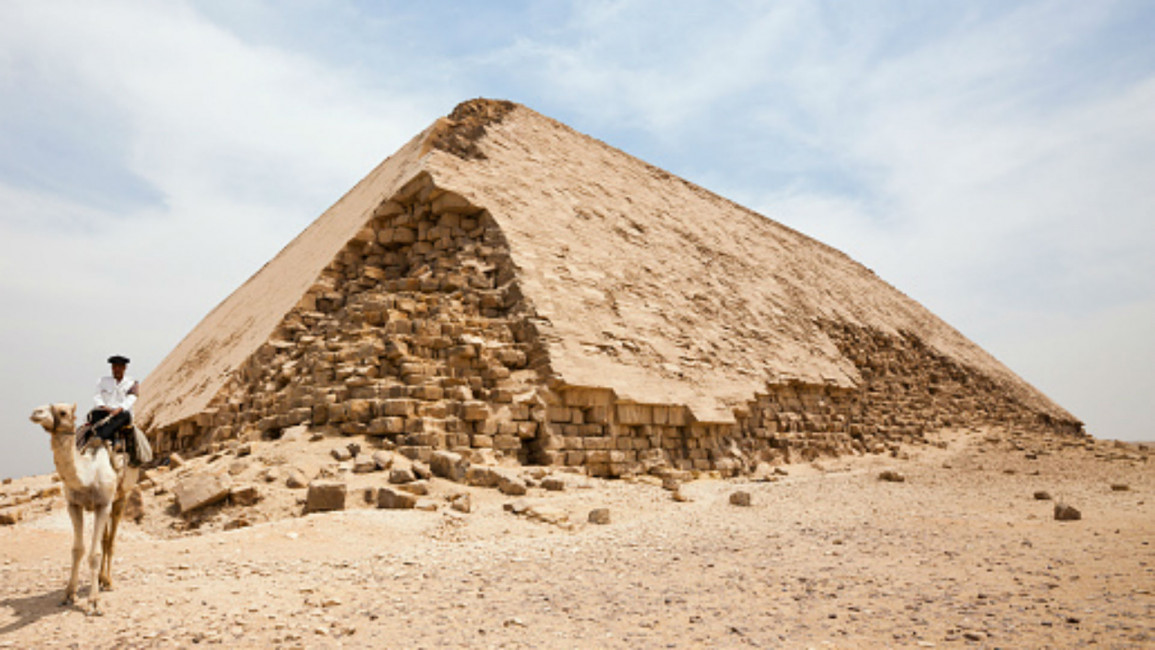
Sci-fi and archaeology: 'Cosmic team' to uncover pyramid's secrets
An international team of researchers said on Sunday they will soon begin analysing cosmic particles collected inside Egypt's Bent Pyramid to search for clues on how it was built and learn more about the 4,600-year-old structure.
Plates planted inside the pyramid last month have collected data on radiographic particles known as muons that rain down from the earth's atmosphere said Mehdi Tayoubi, president of the Heritage Innovation Preservation Institute.
The particles pass through empty spaces but can be absorbed or deflected by harder surfaces.
By studying particle accumulations, scientists may learn more about the construction of the pyramid, built by the Pharaoh Snefru.
"For the construction of the pyramids, there is no single theory that is 100 percent proven or checked," said Hany Helal, the institute's vice president, "They are all theories and hypotheses."
"What we are trying to do with the new technology, we would like to either confirm or change or upgrade or modify the hypotheses that we have on how the pyramids were constructed," Helal added.
The Bent Pyramid in Dahshur, just outside Cairo, is distinguished by the bent slope of its sides.
It is believed to have been ancient Egypt's first attempt to build a smooth-sided pyramid.
The Scan Pyramids project, which announced in November thermal anomalies in the 4,500 year-old Khufu Pyramid in Giza, is coupling thermal technology with muons analysis to try to unlock secrets to the construction of several ancient Egyptian pyramids.
The group plans to start preparations for muons testing in a month in Khufu, the largest of the three Giza pyramids, which is known internationally as Cheops.
"Even if we find one square meter void somewhere, it will bring new questions and hypotheses and maybe it will help solve the definitive questions," said Tayoubi.


